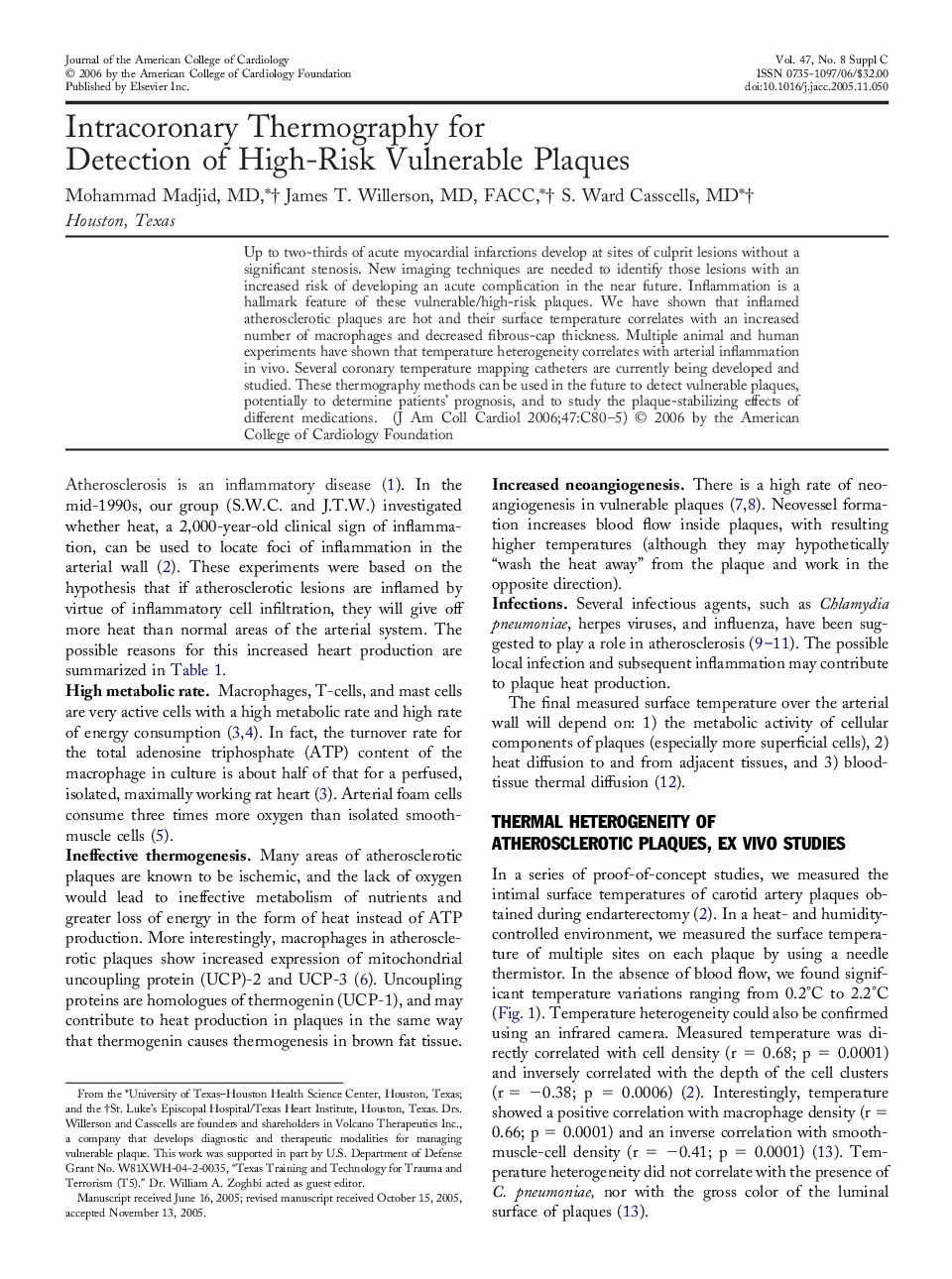| Article ID | Journal | Published Year | Pages | File Type |
|---|---|---|---|---|
| 2954028 | Journal of the American College of Cardiology | 2006 | 6 Pages |
Up to two-thirds of acute myocardial infarctions develop at sites of culprit lesions without a significant stenosis. New imaging techniques are needed to identify those lesions with an increased risk of developing an acute complication in the near future. Inflammation is a hallmark feature of these vulnerable/high-risk plaques. We have shown that inflamed atherosclerotic plaques are hot and their surface temperature correlates with an increased number of macrophages and decreased fibrous-cap thickness. Multiple animal and human experiments have shown that temperature heterogeneity correlates with arterial inflammation in vivo. Several coronary temperature mapping catheters are currently being developed and studied. These thermography methods can be used in the future to detect vulnerable plaques, potentially to determine patients’ prognosis, and to study the plaque-stabilizing effects of different medications.
